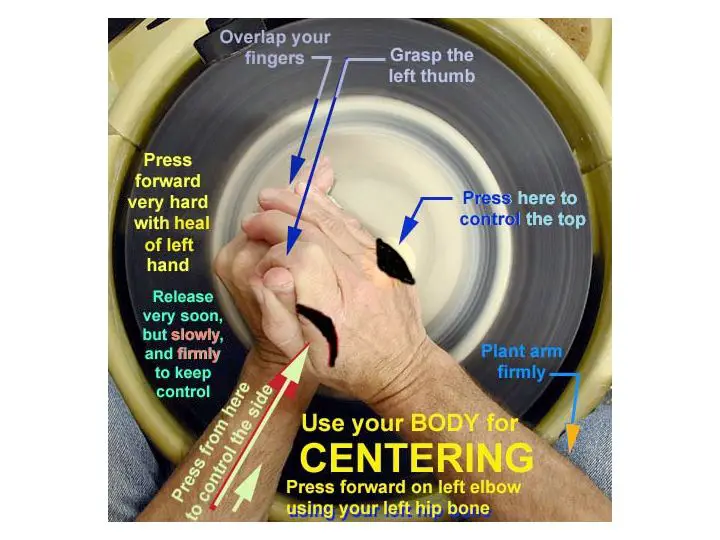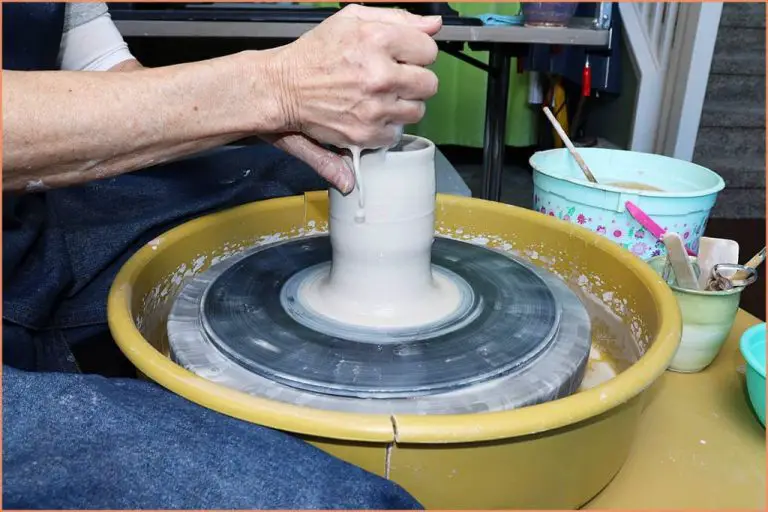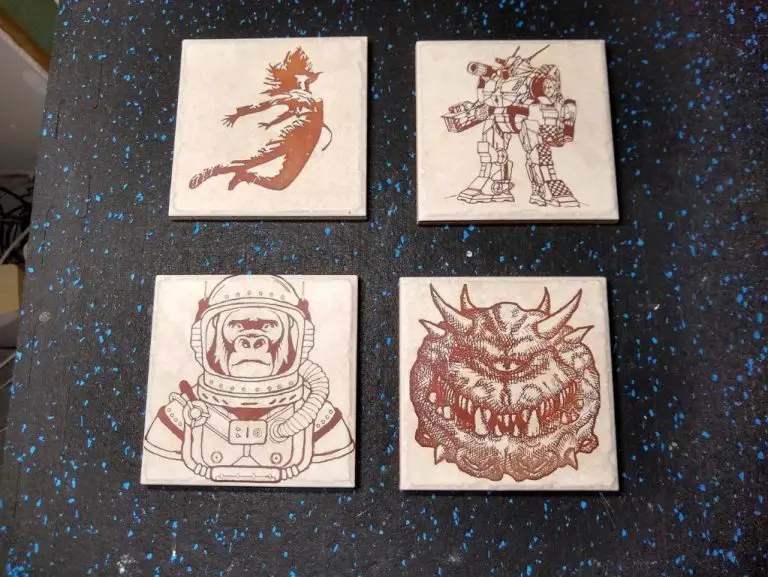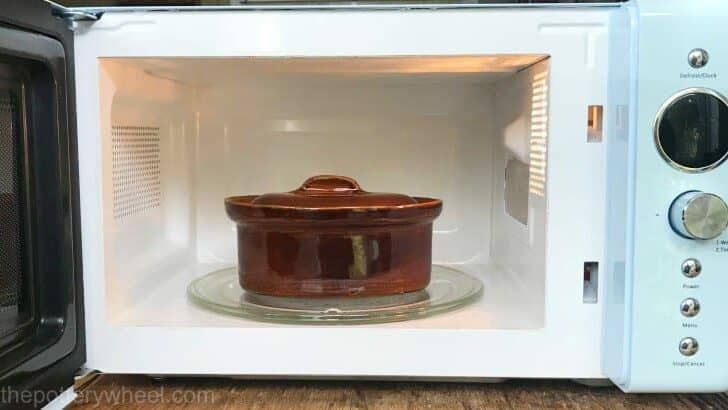What Temperature Does Pottery Fired At?
Firing is a crucial step in the pottery making process, where clay wares are heated to high temperatures in a kiln. The purpose of firing is to permanently harden the clay through a process called sintering, which fuses the clay particles together (Guide to Kiln Temperature Ranges for Pottery). Proper firing transforms soft, fragile clay into a durable material by vitrifying the clay and driving out any remaining water molecules. Reaching the optimal temperature range is essential for achieving the desired strength, porosity, color, and other properties in the finished ceramic piece.
There are several standard temperature ranges used in pottery firing, corresponding to the type of clay and glazes used. The three main categories are low-fire (up to 2,100°F), mid-range firing (2,124-2,264°F), and high-fire (over 2,300°F) (Your Guide to Kiln Temperature Ranges for Pottery). Each temperature range serves a different purpose and produces distinct results. For example, low-fire clays retain more porosity, mid-range firing improves durability, and high temperatures maximize vitrification. Understanding the effects of different temperatures allows potters to select the appropriate range for their project goals.
Low-Fire Temperatures
Low-fire refers to pottery that is fired at the lowest range of temperatures, typically between 1,700°F to 2,100°F (900°C to 1,150°C). This temperature range corresponds to cone 04 to cone 06 on the Orton cone chart, which is a common system used to measure firing temperatures (source). Low-fire clays and glazes mature at these relatively low temperatures.
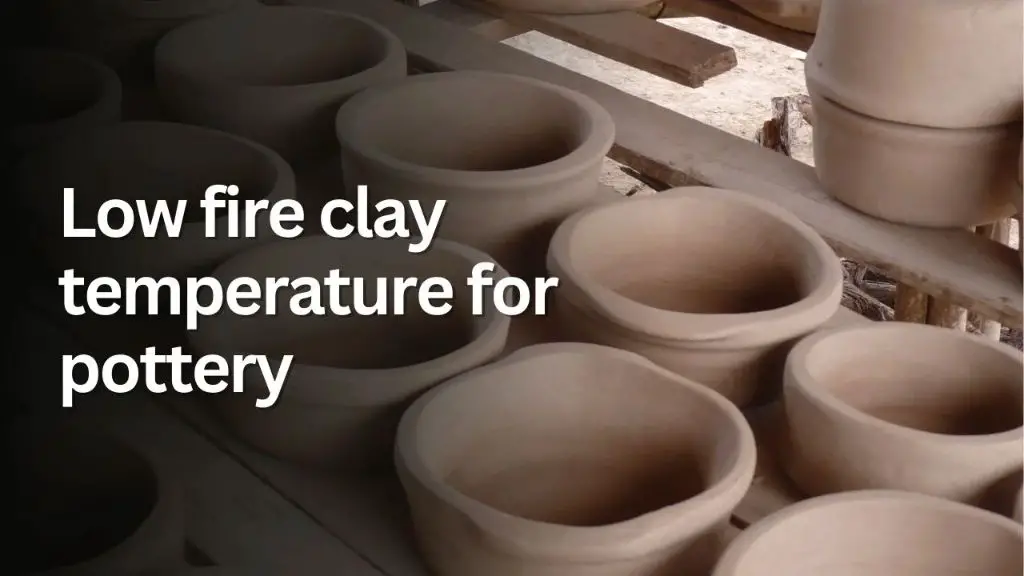
Typical low-fire pottery includes earthenware, terra cotta, and some stoneware clays. These clays are very porous. Low-fire glazes include majolica, dolomite, and high-lead glazes that mature and become glossy within the low temperature range. Lead glazes in particular can develop a bright finish at low temperatures. Low-fire glazes adhere well to the soft, porous nature of low-fire clays (source).
The low temperature range allows the clay body to retain more chemically combined water, resulting in brighter colors and a more coarse, open texture. It also requires less energy consumption compared to higher temperature firings. Low-fired pottery is less durable than high-fired ware.
Mid-Range Firing Temperatures
Mid-range firing refers to firing pottery at temperatures between approximately 1,832°F (1,000°C) and 2,372°F (1,300°C) (Kiln Firing Chart)”. This temperature range is commonly used for stoneware and porcelain clays. Mid-range firing results in ceramic pieces that are durable, vitrified, and waterproof.
The most commonly used mid-range firing temperatures are cone 6 (2,165°F/1,185°C) and cone 5 (2,236°F/1,220°C) (Guide to Kiln Temperature Ranges for Pottery). These temperatures allow the clay body to fully vitrify while still achieving the desired colors and effects from glazes. Cone 6 is a popular choice for stoneware clays, while cone 5 is frequently used for porcelain.
Mid-range firing is ideal for many glazes as well, including celadons, temuku, copper reds, and ash glazes. The temperatures allow the development of striking colors and visual depth in the glaze surface (Your Guide to Kiln Temperature Ranges for Pottery). Mid-range firing produces pottery that is robust enough for utilitarian use while also creating decorative visual qualities.
High-Fire Temperatures
High-fire refers to the highest range of temperatures used for firing pottery and ceramic ware. According to the Kiln Firing Chart from Ceramic Arts Network, high-fire temperatures typically range from 2,300°F to 2,400°F (1,260°C to 1,316°C) [1].
High-fire temperatures are hot enough to vitrify the clay body, causing it to become non-porous. At these temperatures, the glazes will become glass-like and smooth. High-fire clays and glazes are specially formulated to withstand the extreme heat without breaking down. Typical high-fire clay bodies include stoneware and porcelain.
According to Soul Ceramics, the most common high-fire glazes are celadons, tenmokus, and ash glazes [2]. These glazes are specially designed to mature and become glass-like at high temperatures above 2,300°F. High-fire glazes create durable, functional ware.
Cone Numbers
The cone system is used to measure the amount of heatwork absorbed during kiln firing. Pyrometric cones are small pyramid-shaped indicators made of clay that bend and melt at specific temperatures. As the cone heats up, it softens and bends until it reaches its maturing point and tips over. This provides a visual indication that the kiln has reached the desired temperature.
The cone numbers refer to a standardized system developed by Edward Orton Jr. in the late 1800s. The numbers represent a sequence of cones that melt at increasingly higher temperatures. Lower numbers like cone 06 melt at lower temperatures, while higher numbers like cone 10 melt at higher temperatures. Each cone number has a corresponding temperature range it reaches when fired in the kiln.
Here is a cone temperature chart showing the approximate temperature ranges for common cone numbers:1
Cone Temperature Chart
Cone 022: 1075-1085°F (579-585°C)
Cone 06: 1745-1775°F (949-966°C)
Cone 4: 1945-1975°F (1063-1079°C)
Cone 6: 2165-2185°F (1185-1191°C)
Cone 8: 2280-2300°F (1246-1260°C)
Cone 10: 2330-2345°F (1277-1287°C)
The cone system allows potters to reliably recreate firing conditions by selecting the cone number corresponding to the desired temperature result. The cones provide a visual cue when firing is complete, taking into account variations between kilns and firing cycles.
Electric vs Gas Kilns
Electric and gas kilns achieve different temperature ranges during firing. Electric kilns typically reach a maximum temperature between 2,300°F to 2,500°F, while gas kilns can reach 2,400°F to 2,800°F or higher (1). The slightly higher temperatures possible with gas allow firing to higher cone numbers. However, for most low and mid-range firings, either kiln type will work.
Gas kilns can offer more atmospheric effects through reduction firing, where oxygen is removed from the kiln. This can produce more vibrant colors and glaze effects in certain types of pottery. Electric kilns provide oxidation firing with plenty of oxygen inside. This offers reliable and consistent results (2).
Gas kilns may require ventilation and permits for fire safety. Electric kilns simply need an outlet or proper electrical hookup. Gas kilns also require a constant fuel source and monitoring during firing. Electric kilns are easier to operate through automatic controllers.
Overall, gas and electric kilns both allow excellent results in skilled hands. The choice often comes down to the desired temperatures, atmospheric effects, firing behavior, operating convenience, and access to gas/electricity.
Sources:
(1) https://www.soulceramics.com/pages/what-to-look-for-when-buying-a-kiln
(2) https://potterycrafters.com/difference-between-a-gas-and-electric-kiln/
Effects of Different Temperatures
Firing temperature has a significant impact on the physical properties and appearance of ceramic pieces. According to research by Wisniewska et al. (2021), higher firing temperatures increase the mechanical strength and frost resistance of pottery. The kiln temperature affects the vitrification process, which fuses clay particles together into a non-porous, solid material.
Lower firing temperatures like earthenware (up to 2,200°F) produce porous, permeable clay bodies that are fragile and prone to breaking. Mid-range stoneware temperatures (2,200-2,400°F) vitrify the clay, making it denser and more durable. High-fire porcelain clays (over 2,400°F) become extremely dense and strong. However, excessive temperatures can cause deformation or melting.
Glazes are also strongly influenced by temperature. Cooler temperatures may result in underfired glazes that scratch easily. Higher heat matures the glaze into a smooth, impermeable surface. According to Soul Ceramics, the kiln temperature affects glaze flow, smoothness, color vibrancy, and glossiness.
Certain colors require specific heat ranges to develop properly. For example, red iron oxide transitions to deep red and black only at stoneware ranges. Fritted blues need high fire. Raku and pit firing at low temps produce unique smoky effects. The kiln atmosphere (oxidation vs reduction) also alters colors. Thus, understanding the temperature requirements of clay and glaze is key to achieving the desired results.
Tips for Achieving Desired Results
There are a few key things you can do to ensure your clay and glazes reach the proper firing temperatures:
Use pyrometric cones to measure the kiln’s temperature. These are small pyramid shaped pieces of ceramic that bend and melt at specific temperatures, allowing you to physically see when a target temperature has been reached. Place cones both on the inside and outside of shelves to account for variations in the kiln. Refer to a cone chart to select the right cone number for your desired firing temperature.
Use kiln sitter devices or electronic kiln controllers to automatically control heating elements and shut off the kiln when it hits the programmed temperature. Well-calibrated controllers help avoid under or over-firing.
Go slow, with gradual increases in temperature – no more than 200°F per hour. Rapid heating can cause cracks and blisters. Hold at peak temperature for the recommended time to fully mature clay and fuse glazes.
Make test tiles with your clay and glazes to see how they look when fired to different temperatures. This helps determine the optimal temperatures to achieve the characteristics you want.
Check for signs of proper firing – glazes should be smooth, glossy and free of cracks or craters. Vitrified clay will be less porous and resilient to scratches. Clays and glazes that did not reach a high enough temperature may still feel dry, brittle or chalky.
Use a pyrometer to check if clay or glazed tiles have properly cooled before removing them from the kiln. Thermal shock can occur if removed while still hot.
Common Problems
Some of the most common issues that can arise during the firing process include under-firing, over-firing, and slow firing times. Under-firing is when the clay and glazes do not reach their optimal maturation temperature. This can lead to weak, porous pottery. Over-firing occurs when the kiln becomes too hot, resulting in warped, cracked, or melted work. Slow firing times can be caused by technical problems with the kiln like low voltage or defective switches according to potterycrafters.com.
To troubleshoot firing issues, first check that the kiln is reaching the desired temperatures. Use cones to verify this rather than just relying on the kiln’s thermocouple readout. Check voltage and elements if firing is slow. For consistent results, keep detailed notes about firing profiles. Be aware of environmental factors like altitude and humidity that may impact firing. Work with clay and glaze combinations that are known to fire well together. Taking the time to properly diagnose and address firing problems will lead to better quality finished pottery.
Conclusion
When firing pottery, it’s important to understand the different temperature ranges and how they affect the final product. Low-fire temperatures, generally below 2,000°F, are frequently used for bright colored glazes and terra cotta. Mid-range firing from 2,000-2,300°F produces stoneware and is ideal for colored clays. High-fire temperatures above 2,300°F result in porcelain’s glassy finish and vitrified ware. Standard cone numbers from Cone 022 to Cone 12 help measure key temperatures for firing. Whether using an electric or gas kiln, tracking the temperature schedule precisely is essential for success.
In summary, the key temperatures for firing pottery depend greatly on the desired results. Low-fire is best for terra cotta, mid-range fire for stoneware and colored clays, and high-fire for porcelain and vitrified surfaces. Carefully monitoring temperatures during the entire firing process is critical. Test firings allow potters to fine-tune the optimal temperatures to achieve the characteristics they want. With practice and diligent temperature tracking, clay artists can master the firing process for their type of pottery.

